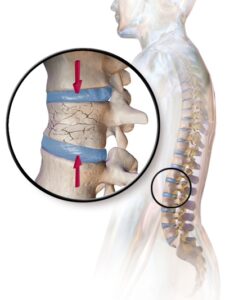Introduction
Spine fracture surgery is a procedure performed to stabilize and repair fractures in the spinal column. Fractures can occur due to various reasons, such as trauma, osteoporosis, or spinal tumors. The goal of spine fracture surgery is to relieve pain, restore spinal stability, and prevent further damage to the spinal cord or nerves.

How Spine Fracture Surgery Works
Preoperative Evaluation: Before surgery, you will undergo a thorough evaluation, including a medical history review, physical examination, and diagnostic tests such as X-rays, CT scans, or MRI scans. This helps determine the location, type, and severity of the fracture, guiding the surgical approach.
Anesthesia: During the surgery, you will be placed under general anesthesia, ensuring that you are asleep and pain-free throughout the procedure.
Incision and Exposure: The surgeon will make an incision near the fractured area to gain access to the spine. The specific location and length of the incision depend on the location and extent of the fracture.
Fracture Reduction: The surgeon will carefully realign the fractured vertebrae into their proper position, using techniques such as instrumentation, screws, plates, or cages to hold them in place.
Stabilization: To promote healing and spinal stability, additional support may be provided using various techniques. This may include spinal fusion, where bone grafts or implants are used to join the fractured vertebrae, or the use of spinal instrumentation such as rods, screws, or wires.
Closure: Once the fracture is stabilized, the surgeon will close the incision using sutures or staples. Sterile dressings or bandages will be applied to promote healing.
Postoperative Recovery: After the surgery, you will be closely monitored in a recovery area until the anesthesia wears off. Pain medications will be provided to manage discomfort. Depending on the extent of the surgery and your overall health, you may need to stay in the hospital for a few days before being discharged.
When Spine Fracture Surgery is Needed
Spine fracture surgery is typically considered in the following cases:
Severe Fractures: When the fracture is unstable, displaced, or causing significant pain, surgical intervention may be necessary to realign and stabilize the spine.
Neurological Impairment: If the fracture is compressing the spinal cord or nerves, resulting in neurological symptoms such as weakness, numbness, or difficulty with bladder or bowel function, surgery may be needed to relieve pressure on the spinal cord and prevent further damage.
Spinal Instability: Fractures that cause significant spinal instability, leading to abnormal movement or curvature of the spine, may require surgical stabilization to restore spinal alignment and prevent further complications.
Failure of Conservative Treatment: If conservative treatments such as bracing, pain medications, and physical therapy have failed to provide relief or improve the fracture, surgery may be considered as a treatment option.







